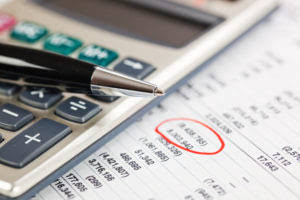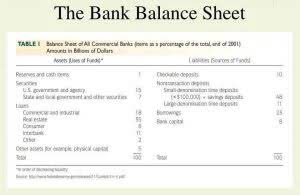Weighted Average Shares Outstanding Example How to Calculate 8 augustus 2022 – Posted in: Bookkeeping

Together, these filings equip stakeholders with the tools to evaluate a company’s financial health and equity structure. The number of shares outstanding increases whenever a company undertakes a stock split. Stock splits are usually undertaken to bring the share price of a company within the buying range of retail investors; the increase in the number of outstanding shares also improves liquidity.
Definition of Common Stock Outstanding
- If you’re interested in learning about common stock, you may also in learning about the best broker available for your needs, so visit our broker center to discover the possibilities.
- Shares Outstanding represent all of the units of ownership issued by a company, excluding any shares repurchased by the issuer (i.e. treasury stock).
- We pro-rated the weighted average number of shares according to their duration.
- For most companies, the number of authorized shares well exceeds the shares outstanding.
- Investors often track changes in outstanding shares as part of their broader analysis when making investment decisions.
Outstanding shares equation differ from issued (Authorized) as authorized shares are the number of Accounts Receivable Outsourcing shares a corporation is legally allowed to issue. Warrants are instruments that give the holder a right to purchase more outstanding stock from the company’s treasury. Whenever warrants are activated, stocks outstanding increase while the number of treasury stocks decreases. If all these warrants are activated, XYZ will have to sell 100 shares from its treasury to the warrant holders. We have seen corporate actions above and their treatment of the weighted average outstanding shares. If the Company buys back the shares, they are treated similarly to the shares issued, but on the opposite, the shares are reduced from the calculation.
- Conversely, a reverse stock split reduces the number of outstanding shares.
- Let us consider the following example and incorporate various scenarios that can affect the weighted average number of shares outstanding.
- Read on to learn how to calculate outstanding shares so you can begin mastering the market.
- It also has 10 million stock options outstanding with an exercise price of $5.
- CFI is the global institution behind the financial modeling and valuation analyst FMVA® Designation.
- We plan to cover the PreK-12 and Higher Education EdTech sectors and provide our readers with the latest news and opinion on the subject.
How to Calculate Common Stock Outstanding From a Balance Sheet
Overall, the number of shares outstanding, the metrics you can calculate from it, and related metrics — like the float — provide key insights to investors. Moreover, the number of shares outstanding is extremely useful when monitoring how a company conducts its business, as things like stock splits also affect share numbers. For example, when shares outstanding are going up, the ownership stake of shareholders is diluted. And when shares are bought back, investors end up owning more of the company. An additional metric used alongside shares outstanding is a company’s “float,” which refers to the shares available for investors to buy and sell on the open market. Discover how to locate shares outstanding in financial statements, enhancing your investment analysis and decision-making skills.

Calculate the Weighted Average of Outstanding Shares
Learn how to locate and interpret shares outstanding on a 10-K form by reviewing key sections like the cover page, financial statements, and disclosures. A higher number of outstanding stocks means a more stable company given greater price stability as it takes many more shares traded to create a significant movement in the stock price. Investors often track changes in outstanding shares as part of their broader analysis when making investment decisions.

In other words, the fully diluted number of Stocks outstanding tells you how many outstanding stocks there could potentially be. It is essential to note that outstanding shares can fluctuate due to events such as stock buybacks or secondary offerings. Stock buybacks, for instance, reduce the number of outstanding shares, potentially boosting the company’s earnings per share (EPS) and making each share more valuable. As we’ve already seen, the number of how to find number of common shares outstanding a company’s outstanding shares can vary over time, sometimes fluctuating a great deal.

The number of shares outstanding is typically found under the shareholders’ equity section, which includes common stock, preferred stock, and additional paid-in capital. Common stock often includes the par value of the shares, while accompanying notes specify the number of shares authorized, issued, and outstanding. The number of shares of common stock outstanding is a metric that tells us how https://evehost.co.za/is-accounting-a-hard-major/ many shares of a company are currently owned by investors.

Companies report share counts as of specific dates, leading to variations across sections. The below table shows the weighted averages shares outstanding calculation in a tabular format. Below is the Weighted Average Shares calculation example when shares are issued and repurchased during the year. If the investor holds two shares in the Company, he will now have one share. Let us consider the following example and incorporate various scenarios that can affect the weighted average number of shares outstanding.
Shares Outstanding Vs. Float and Free Float Vs. Shares Outstanding
The numerator in the earning per share (EPS) formula is net income from the income statement, which tracks the financial performance of a company over a period of time. First, the board of directors authorizes the company to issue a certain number of shares. The company hasn’t taken action yet; it’s just gotten approval to take action and sell some shares if it chooses to. As an example, let’s say that a fictional business, the Helpful Fool Company, has authorized 5,000 shares. The life of common stock goes through a few phases, and understanding each step is important for putting the common-stock-outstanding number into proper perspective. A recent example of a reverse stock split is General Electric’s (GE) 1-for-8 reverse stock split during the summer of 2021.
Many different terms for the number of shares of stock
Companies with significant insider ownership, such as Meta Platforms, often have a float much smaller than their total share count. A lower float can lead to greater price volatility and liquidity constraints. Public companies must disclose their total shares outstanding, a key figure for investors assessing market value and ownership structure. This number is essential for calculating earnings per share (EPS) and market capitalization, both of which influence investment decisions. Conversely, outstanding stocks will decrease if a firm completes a share buyback or a reverse stock split (consolidating a corporation’s shares according to a predetermined ratio). As a result, it decreases the number of outstanding stocks in the public and increases the amount of treasury shares.
